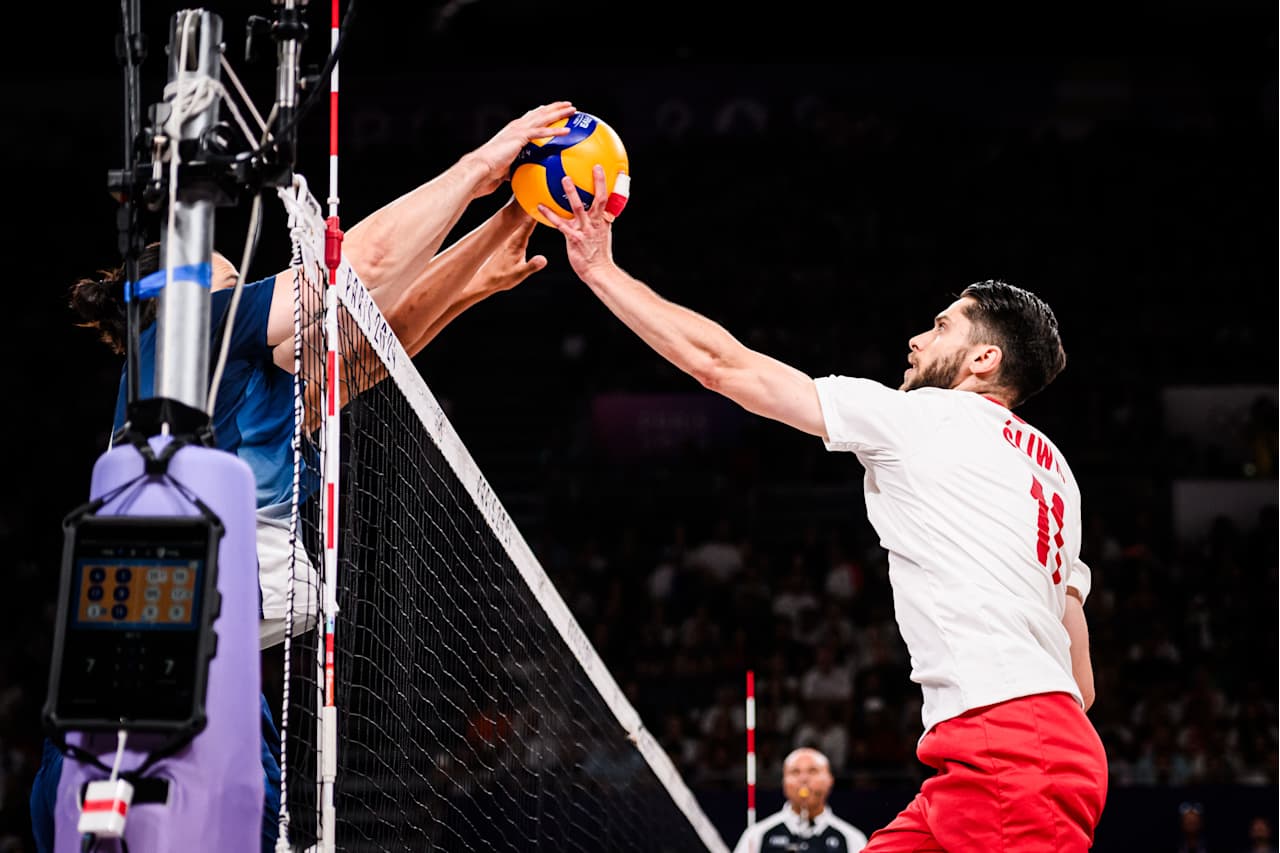Did you know that the rules of volleyball have changed slightly since 2025?
In this article, we will explain the differences between the international volleyball rules that were changed this year and the previous ones.
New rules for volleyball
The Fédération Internationale de Volleyball (FIVB) has created new rules for the tournament to be held from 2025 to 2028.
Official Volleyball Rules 2025-2028
There are five main changes from the previous rules:
①Abolition of positional faults by the serving side
② Change the timing of the serve-receiving team's movement
③ Clarification of ball-out
④ Stricter penalties for screens
⑤Abolition of challenges during rallies
⑥ Relaxation of double contact(Test introduction at some tournaments only)
I will explain these in order.
①Abolition of positional faults by the serving side
- Conventional: Players had to line up in their designated positions (rotation) except for the server.
- New Rules:Players on the serving team other than the server can move and position themselves freely before the serve..
- Example: An outside hitter in position 2 (right front court) may be on the left side before the serve regardless of the positions of the other players.
- the purpose: Smooths movement after receiving the serve, allowing for faster attacking.
Previously, players other than the server had to line up in a designated position, but from now on, only players on the serving team will be required to do so.You can freely take your position before servingHowever, the serve-receiving team must maintain the same rotational positional relationship as before.
② Change the timing of the serve-receiving team's movement
- Conventional: The player on the serve receiving team was allowed to move out of their prescribed position (rotation) from the time the opponent hit the serve.
- New Rules: The player on the serve receiving team may start moving after the opposing server tosses the serve.
- the purpose: Clarification of the criteria for judgment.
Under the previous rule, it was okay to start moving when the serve hit, but in practice the rules were not strict and the criteria for judgment were vague. This revision makes the criteria for judgment clearer. This will make it easier to move, especially against the opponent's jump serve.It is now easier to create more flexible serve receive formations than before.(This is because a jump serve usually takes a long time from tossing to hitting.)
③ Clarification of ball-out
- Conventional: Even though the ball went outside the net (antenna), play continued at the umpire's discretion.
- New Rules:The moment the ball passes outside the net (antenna) after the second or third touch, it is "out".
- the purpose: Prevents protests and confusion by introducing clear criteria for assessment.
After the second or third touch, the ballThe moment you try to go to the other side of the net, you're out.However, after the first touch, the decision will be made as usual.
④ Stricter penalties for screens
- Conventional: Although "screening," in which a teammate hides the ball while serving, was prohibited, it was effectively tolerated.
- New Rules: If the umpire judges it to be an "intentional screen," there is a clear penalty of an immediate "loss of service point."
- Example: When front players are seen crowding together and spreading their arms to hide the server.
- the purpose: Prevents cheating and ensures fairness in serve reception.
"Screening," which is the act of intentionally blocking the opponent's view when serving, has been prohibited for some time, but from now onIf the umpire judges it to be "intentional," the serve will be immediately forfeited.Especially when serving, the player on the serving sideRaising your hands above the top of your head is immediately considered an "intentional screen" and will result in a loss of points.It will be.
⑤Abolition of Mid-Rally Challenge
- Conventional:There was a "mid-rally challenge" system that allowed play to stop during a rally and request a challenge.
- New Rules:You cannot apply for a challenge until the rally has ended..
- the purpose: Preventing play interruptions and maintaining game flow.
The "challenge request during a rally" feature, which was previously introduced on a trial basis in some areas, has been abolished because it was thought to disrupt play.
In the future,The challenge can only be completed after the rally has finished.After a rally has ended, you can request a challenge for any play from the time you serve until the end of the rally.
⑥ Relaxation of double contact restrictions (trial introduction only in some tournaments)
- ConventionalTouching the ball twice during the same movement (e.g. touching the ball twice with a fingertip) is considered "double contact" and is a foul.
- New Rules:Allowed as long as the ball remains on the same team's side.
- Example: If the setter touches the ball twice when tossing it, it is OK as long as the ball is not passed to the opponent's court.
- the purpose: Allows for fluid play without stopping rallies.
Even in situations that were previously considered double contact fouls,As long as the ball remains on your team's sideHowever, if the ball is touched twice in succession with clearly different movements, it will still be a double contact foul.
*This rule will be introduced on a trial basis in certain tournaments, such as VNL, with consideration given to making it a permanent rule once its effectiveness has been verified.
Pay attention to the impact of the rule changes!
Changes to the rules of sports have had an impact on everything from team tactics to individual playing styles.
How will this rule change affect the game? When watching a game, be sure to pay attention to the new rules and enjoy the game!
Photo: Volleyball World
